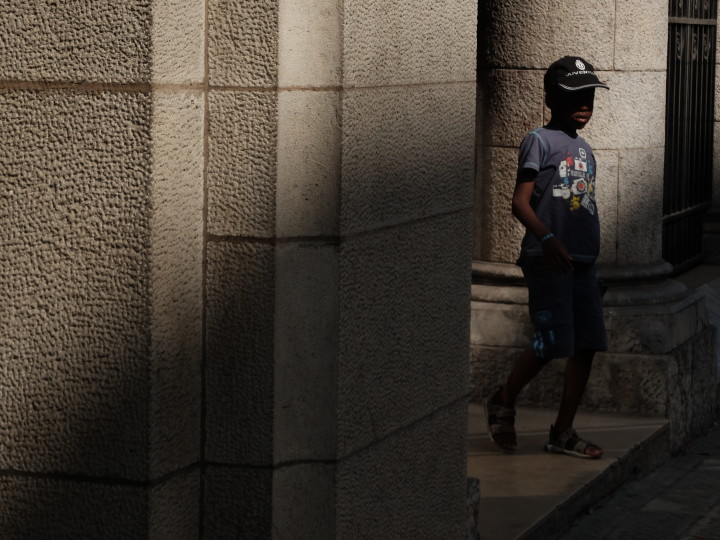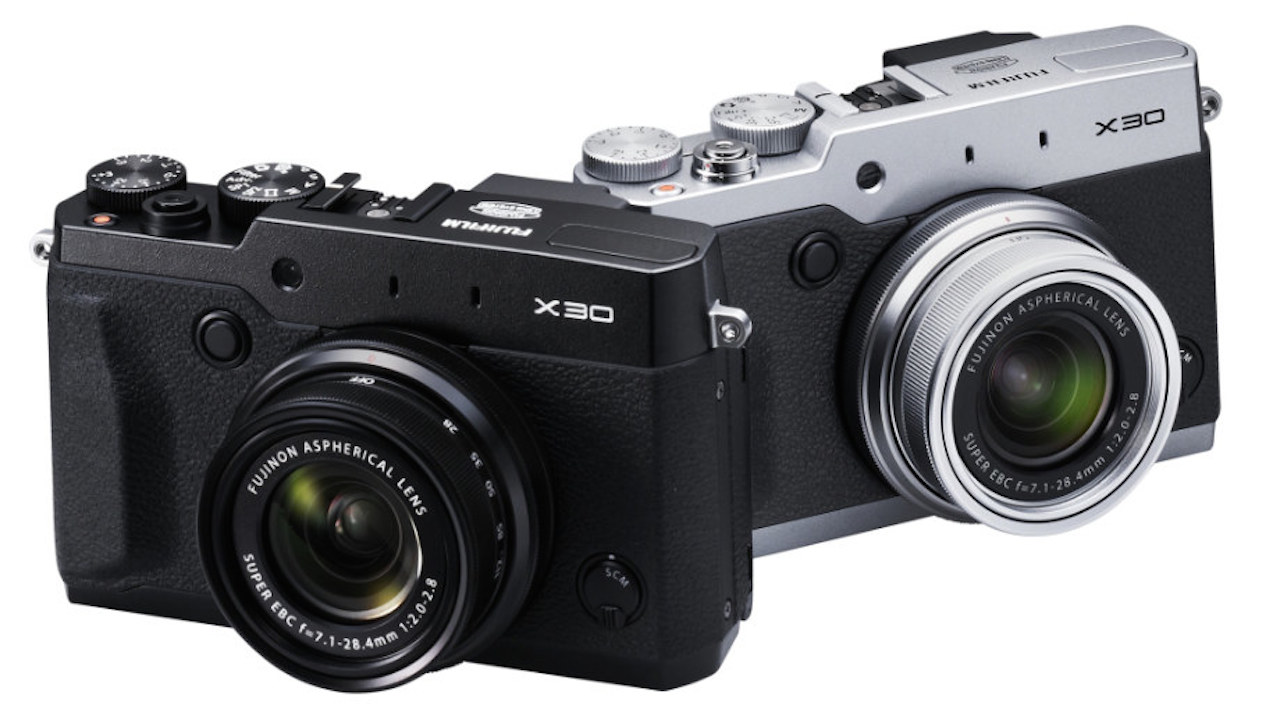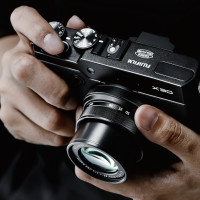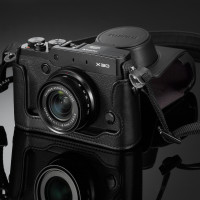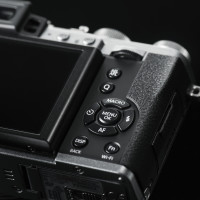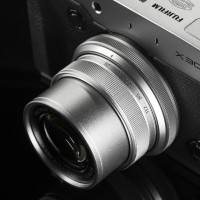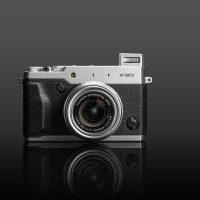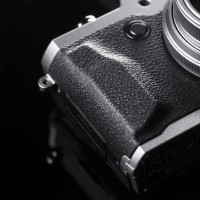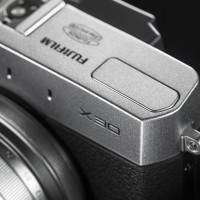Today Fujifilm announced the successor to the popular X20. The new Fujifilm X30 is the third generation of high-end compact X series zoom cameras. It has an updated and more modern design, replaces the optical viewfinder with the same electronic viewfinder found on the X-E2, and adds lots of improvements and new features including a new film simulation mode called “Classic Chrome.”
Updated body design with better manual controls
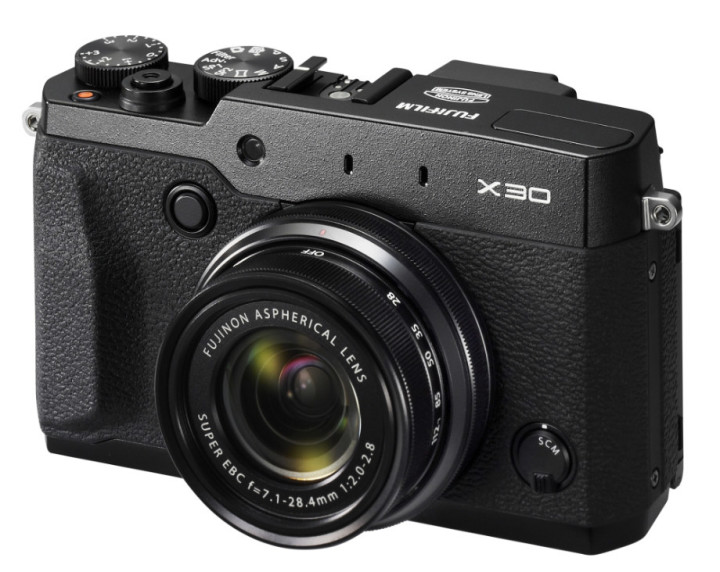
The X30’s design has been slightly updated with lines on the body that make it look more modern while retaining a little bit of that retro look that many users loved in the previous models. The top and bottom of the camera are made of magnesium alloy and the top dials are made of metal. There is a visibly improved grip on the front as well as a new function button next to the lens. The AF/MF switch on the front is the same as the one on the X20.

On the lens there is a new function ring that can be used to select the aperture, shutter speed, manual focus and even more options. This new ring is similar to the one you can find in the Sony RX100 line. I am very curious to see how smooth and precise it is. On top, there is the same dial mode and exposure compensation mode (now with 3ev), a standard hot-shoe and a movie recording button instead of the Fn1 button (but that can still be customised).
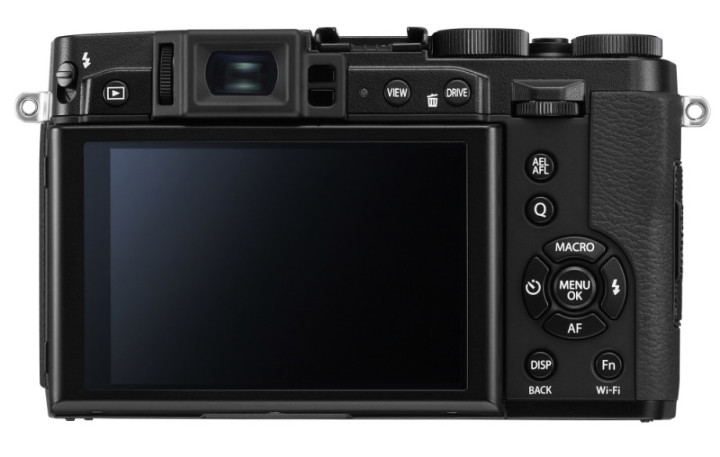
The rear of the camera has been completely redesigned. There are no more buttons on the left to leave place for a larger and tilting LCD screen (twice the resolution of the X20 screen). On the right, there is now an arrow pad, the Q button, the DISP button, the AEL/AFL button and a function button at the bottom that is set by default for WiFi. Turning to the rear, at the top we find the Drive and View buttons while the playback button has been moved to the top-left next to the flash switch. There is also a plastic dial on the right that has been redesigned as well.
Below you can see some additional product images of the Fuji X30.
Goodbye OVF, hello EVF
I never fully appreciated the OVF on the X20 because of its parallax limitation so I am really pleased to see that it has been replaced with an electronic viewfinder, and not the worst one by far. The X30 features the same EVF found on the Fuji X-E2, meaning a 2.36 M-dot electronic viewfinder that has only 0.005 seconds display lag. Not bad at all for a compact camera. The information displayed in the viewfinder rotates when the camera is used in portrait mode (like the X-T1 viewfinder). Also now the EVF can also automatically adjust its brightness.
A new feature called “RAW shooting mode” allows you to preview the RAW results instead of the JPG results via the selected film simulation mode. That is a very interesting option for all photographers who prefer to work with RAW files. By using this mode, you won’t focus on any particular colour or contrast rendering and you will also have a better preview of the dynamic range of your shot.
New and improved performance
The X30 features the same sensor found in the X20, which is a 2/3″ X-Trans II sensor with 12 megapixels. The processor is also the same so I don’t expect any improvements in terms of image quality. Like the X20, the X30 is probably good up to ISO 1600 before starting to have too much noise in the images. There are now three Auto ISO modes instead of one. So for those who were hoping for an overall improvement in image quality might be disappointed at first: no 1 inch sensor like on the Sony RX100, no new generation sensor either.
The lens is also the same, a 28-112mm equivalent with a non-constant aperture of f/2-2.8. That said, there are a lot of new improvements regarding the performance of the camera that still make it a worthy upgrade. Of course until we get our hands on it, it is hard to conclude anything, but Fujfiilm seems to have improved lots of features and details.
The autofocus seems to have taken a step-up: the X30 features the same hybrid AF system found on the Fuji X-T1 and X-E2 with 49 AF points (9 are phase detection points and found at the centre of the sensor). There is also a new multi-point that displays several points at once. Fuji claims that it has the world’s fastest autofocus but since it says the same thing about every camera release, I will wait for a real world test to see how fast it really is. There is also focus peaking for manual focus. Sadly, none of Fujifilm’s great manual focus assist technologies have been implemented in the X30, such as digital split imaging or dual screen.
The camera now includes interval shooting capabilities (time-lapse) and also has flash compensation options (unlike the X20). Remember that the X30 has a leaf shutter, therefore you can have flash synchronisation up to 1/1000s.
There is also a big improvement in the video capabilities. You can now shoot in manual mode (finally!!) with control over aperture and shutter speed even when recording. ISO can be set manually and you can also set a film simulation mode. There are more frame rate options going from 60fps to 24fps and that includes the Europe PAL 50 and 25fps. Fujfiilm says that the bitrate is 36mbps, which is the same as the X-T1. You can use either auto or manual focus during video recording but you can only use focus peaking before pressing the movie record button. That is a shame really. There is also an audio input socket for an external microphone.
Finally some news that might interest most Fuji users is the introduction of a new film simulation mode called “Classic Chrome” which is inspired by old Kodak film. As a big fan of Fujifilm colour rendering, I am really curious to try this new colour profile. I expect to see it on the other Fuji X cameras via a firmware update as well, and also in the next Adobe Lightroom update.
Below two images shot with the X30 in Classic Chrome from the official Fujifilm press media kit.
Enhanced user experience
There are several other improvements that should be mentioned. In addition to the 6 configurable function buttons, you can now customise the quick menu, and assign a different function to one of the sixteen rectangles of the menu. This is certainly a welcome addition. Moreover, each of the six function buttons can have their function changed by pressing and holding the button for a few seconds. This another great feature that will make such buttons even more convenient to use, as you don’t need to go through a menu to change their functions.
The X30 also features WiFi and Fuji Instax print capabilities. The battery has changed–it is now the same NP-95 type used in the X100/X100s. The camera can be charged with the USB port but unfortunately a proper charger isn’t supplied with the camera but is only available as an optional accessory. It looks like Fujifilm is following in the footsteps of Sony with its compact cameras.
The perfect high end compact camera for street and travel photography?
The new Fujifilm X30 certainly looks like an exciting camera. Many improvements have been made to enhance the user experience first of all. More customisation options, more manual control and a great EVF. While some might be skeptical due to the lack of a new sensor, it also true that image quality seems to have benefits like the newly introduced film simulation mode and an overall improved JPG engine. I expect that many of these new features might be available for other Fuji cameras with a firmware upgrade. Fujifilm is known for the great improvements made to its cameras via firmware updates, so it makes sense.
Certainly there are a couple of features that at least on paper could have been better. Why not extend the peaking option to manual focusing also during movie recording for example?
That said, the Fujifilm X30 is certainly an attractive camera that, thanks to its size and minimalistic appearance, can satisfy both street and travel photographers. It is without a doubt the main competitor for the Sony RX100 Mk iii but has a indisputable advantage when it comes to price.
Below some extra images taken with the X30 from the official press media kit.

